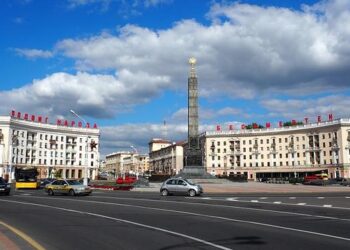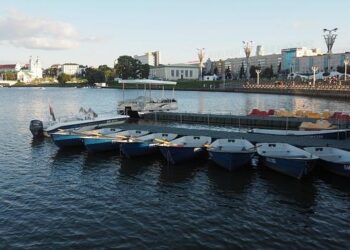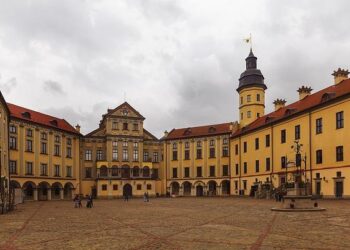Latvia has announced plans to impose new restrictions on passenger traffic to Belarus, citing security concerns amid rising regional tensions. The move comes as queues at the Belarusian-Polish border have significantly increased, disrupting cross-border travel and drawing attention to the growing complexities in Belarus’s relations with its neighbors. The developments highlight mounting challenges in managing border controls in the Baltic region, as authorities seek to address both political and logistical pressures.
Latvia Announces Restrictions on Passenger Traffic to Belarus Impacting Regional Mobility
Latvia’s decision to impose new restrictions on passenger traffic bound for Belarus is already causing significant disruptions across the region. The policy, aimed at tightening border controls in light of recent geopolitical tensions, has led to extended waiting times and longer lines at entry points. Notably, the Belarusian-Polish border is experiencing a surge in congestion as travelers reroute their journeys, seeking alternative passage or facing delays in transit. This shift is straining local infrastructure and raising concerns among commuters and freight operators alike.
The ripple effect of these limitations is prompting practical challenges for residents and businesses that depend on seamless cross-border movement. Key impacts include:
- Increased queue times extending several kilometers at checkpoints
- Heightened pressure on regional transport services and logistics hubs
- Economic repercussions for small enterprises reliant on cross-border trade
- Shifted traffic flows affecting neighboring borders and transportation corridors
| Border Crossing | Average Waiting Time | Change Since Restrictions |
|---|---|---|
| Latvia-Belarus | Up to 8 hours | +250% |
| Belarus-Poland | Up to 10 hours | +180% |
| Lithuania-Belarus | 6 hours | +120% |
Prolonged Queues and Congestion Emerge at Belarusian Polish Border Amid Rising Transit Controls
Heightened security measures and intensified transit controls have led to significant delays at one of Eastern Europe’s busiest crossings. Travelers report waiting times extending well beyond the usual duration, with queues stretching for several kilometers. Authorities cite the need for stricter checks amid growing political tensions and increased scrutiny of cross-border movements. This escalation has affected not only passenger vehicles but also freight transport, disrupting timely deliveries and complicating logistics across the region.
The impact is evident in the surge of congestion, which has prompted concerns among local businesses and daily commuters alike. Key factors contributing to the delays include:
- Enhanced document verification protocols
- Increased number of inspections for goods entering Poland from Belarus
- Reduced processing capacity due to augmented customs staffing requirements
| Checkpoint Section | Average Wait Time | Peak Hours |
|---|---|---|
| Passenger Vehicles | 3-5 hours | 8 AM – 12 PM |
| Freight Transport | 6-8 hours | 7 AM – 10 AM |
| Bus Transit | 4 hours | 5 PM – 8 PM |
Experts Recommend Enhanced Coordination Between Baltic and Polish Authorities to Alleviate Border Delays
Authorities across the Baltic states and Poland are facing mounting pressure to address the escalating delays at the Belarusian-Polish border following Latvia’s announcement to restrict passenger traffic to Belarus. Experts emphasize that improving operational coordination is crucial to managing the growing queues effectively. Key recommendations include the implementation of synchronized border control procedures, real-time data sharing on passenger flow, and joint deployment of additional inspection teams to expedite processing times.
For a clearer picture, experts propose focusing on several strategic actions:
- Enhanced communication channels between customs and immigration services to reduce redundant checks.
- Unified scheduling of border inspections, reducing peak-time overloads.
- Investment in technology such as automated processing kiosks to facilitate faster throughput.
- Cross-border emergency protocols to respond swiftly to unexpected surges.
| Authority | Proposed Role |
|---|---|
| Latvian Border Police | Coordinate with Polish counterparts on traffic restrictions |
| Polish Customs | Increase manpower during peak hours |
| Baltic Transport Ministry | Oversee technological upgrades for border stations |
| Belarusian Authorities | Provide transparent passenger data to neighbors |
Wrapping Up
As Latvia moves forward with plans to restrict passenger traffic to Belarus, the situation at the Belarusian-Polish border continues to intensify, with queues growing longer amid heightened controls. This development underscores the escalating tensions in the region and reflects broader geopolitical challenges affecting cross-border movement. Observers will be watching closely to see how these measures impact travel, regional relations, and the daily lives of those relying on these transit routes.
















